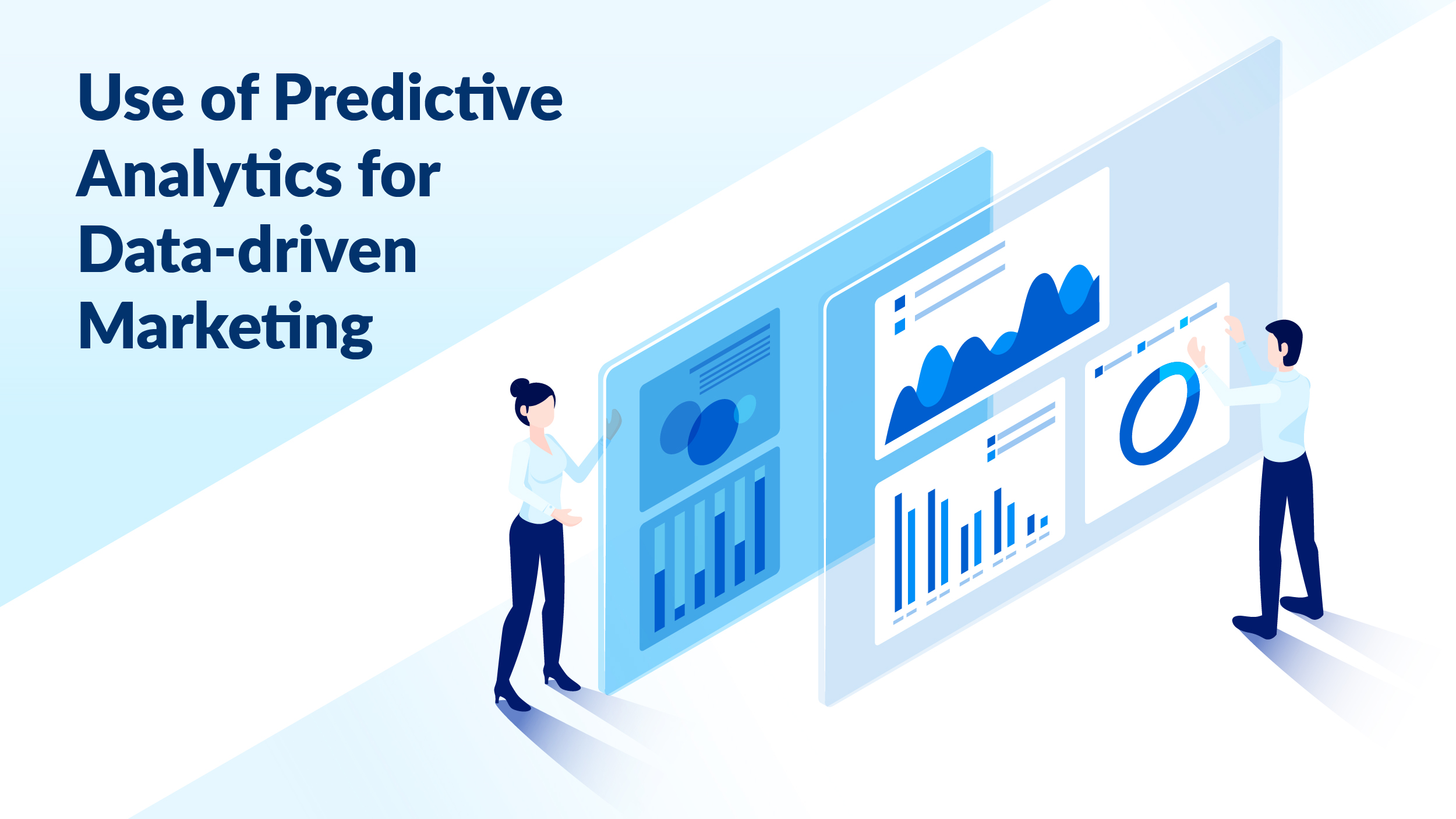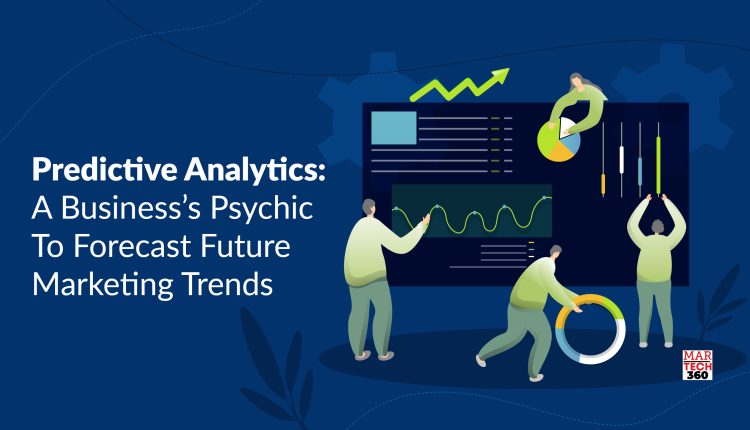The term “predictive analytics” speaks for itself. Making predictions about future events through historical data and analytics methods like statistical modeling and machine learning comes under the umbrella of predictive analytics. Businesses should develop new upgrades to stay afloat in the market, just like any other software does with updated versions in app stores in response to new trends. Predictive analytics is therefore absolutely necessary for any business to provide customers with exactly what they want in the best way possible. By doing this, businesses grow more effectively, generate more revenue, and grow as a brand.
Decoding Predictive Analytics and its functionality
The method of applying data analytics to create predictions based on data is known as predictive analytics. The use of a statistical or machine learning technique to provide a quantitative future prediction is referred to as “predictive analytics.”
Using data, analysis, statistics, and machine learning methods, this procedure builds a predictive model for predicting events in the future. For example, using autonomous machine learning algorithms, it is possible to find the answers to queries like, “How likely is a consumer to skip a loan payment? Or “when a machine may require maintenance?”
Starting with a business objective, predictive analytics aims to use data to eliminate material waste, save some time, or lower costs. In order to achieve that goal, the process makes use of heterogeneous and massive amounts of data to create models that can produce definite, actionable results, such as decreased material waste, less stocked inventory, and manufactured products or goods that meet the specific requirements.
What Is The Relationship Between Descriptive And Predictive Analytics?
 Although the two have a strong overlap, the objectives and techniques of descriptive and predictive analytics are distinctive. In order to comprehend what has taken place in the past, descriptive analytics focuses on studying historical data and spotting patterns and trends. On the other hand, predictive analytics uses historical and present data, statistical modeling, and machine learning strategies to forecast the next events or patterns. By finding patterns and connections in the data that can be used to predict future outcomes or behavior, predictive analytics frequently builds on descriptive analytics. In other words, by assisting in the identification of significant data and patterns
Although the two have a strong overlap, the objectives and techniques of descriptive and predictive analytics are distinctive. In order to comprehend what has taken place in the past, descriptive analytics focuses on studying historical data and spotting patterns and trends. On the other hand, predictive analytics uses historical and present data, statistical modeling, and machine learning strategies to forecast the next events or patterns. By finding patterns and connections in the data that can be used to predict future outcomes or behavior, predictive analytics frequently builds on descriptive analytics. In other words, by assisting in the identification of significant data and patterns
that can potentially be utilized to create predictions, descriptive analytics serves as the building block for predictive analytics.
What are the four primary aspects of predictive analytics?
The four aspects of predictive analytics are given below:
Data Sourcing
This is an important aspect of predictive analytics as it gathers data such as industry trends, customer behavior, sales history, and other useful information. Data needs to be accurate and relevant, which helps the organization create effective predictive models.
Data utility
Data that is of high quality, or that is reliable, accurate, and relevant, is essential for predictive analytics. For this data to be useful in predictive models, it needs to be correctly processed and analyzed.
Deep learning
In order to examine enormous data sets and generate reliable predictions, predictive analytics mainly relies on cutting-edge machine learning and deep learning techniques.
Business goals
Predictive analytics needs to be aligned with certain corporate goals and objectives in order to be effective. This includes establishing measurements and key performance indicators (KPIs) that can be used to assess the efficacy of predictive models and change tactics as necessary.
Benefits of Predictive Analytics
Predictive marketing benefits undoubtedly boost sales and business expansion, but they may go even further. Every aspect of marketing can change if you can precisely predict future trends. Marketing professionals can quickly predict trends across channels when data is tracked more accurately and granularly. Through identifying accurate trends, solutions for predictive analytics can be created. Here are some of the most important benefits of using predictive analytics:
Lead Qualifying and Ranking
Do you have an unending supply of leads? If your company is like most others, you are unsure about where to begin and concerned about losing out on easy conversions. Thankfully, the lead scoring systems available today are much more efficient than picking names randomly from a bowl. Marketers can score leads and concentrate on those that are most likely to convert by taking customer behavior into account.
Consumer Behavior Analysis
As explained previously, much of the magic happens here as you discover potential changes in consumer trends, patterns, and behaviors. You get a head start and can create content strategies while competitors are busy responding to changes. At this point, customer behavior analysis helps you move past the “right place, right time, right content”
Although it’s natural to become deluded by profits and the figures of your return on investment, this also signifies that you’re improving the customer experience. If you’re already on top of the game, brand loyalty will only increase.
Enhanced Resource Utilization
Let’s consider that a business has limited resources this year. They might feel envious of brands that have nearly unlimited funds. But what are they doing about it? As a business, you must be careful with every marketing dollar you spend, particularly in the wake of the post-pandemic “new normals”. Making the proper judgments gets easier as you use predictive analytics to create more insights. You are informed about possible shifts in consumer behavior, the best prospects, and even customer retention strategies.
Predictive Analytics Creates Happy Customers
Better decisions are made as a result of data, effective content, and higher standards of service, which together keep all consumers satisfied. When a customer is happy, they have very little inclination to shop around. With predictive analytics, you constantly learn about the best marketing tactics and opportunities, such as up-sells, cross-sells, and so much more.
Use of Predictive Analytics for Data-driven Marketing
 The ability to be creative is the key to good marketing. However, creativity doesn’t just happen. It is fueled by the analysis of prior marketing initiatives as well as market and competition monitoring. And the cornerstone of effective marketing initiatives is data. It’s the technique by which marketers gather and examine information about customers, prospects, markets, and competitors in order to make the best decisions and increase their chances of making more money. Data enables you to comprehend the buying intentions and behavior of your customers.
The ability to be creative is the key to good marketing. However, creativity doesn’t just happen. It is fueled by the analysis of prior marketing initiatives as well as market and competition monitoring. And the cornerstone of effective marketing initiatives is data. It’s the technique by which marketers gather and examine information about customers, prospects, markets, and competitors in order to make the best decisions and increase their chances of making more money. Data enables you to comprehend the buying intentions and behavior of your customers.
Businesses can use predictive analytics to discover and take full advantage of hidden patterns, different risk factors, and new opportunities in order to maximize their products based on customer demand and establish lasting relationships.
Understanding current market trends that most people are aware of, customer lifetime value and other measurements is crucial for ensuring business growth, success, and relevance. Predictive analytics is a means to identify the next major product to bring to market to address the issues of your customers.
However, customer data is only useful if it is efficiently researched, analyzed, and interpreted. Effective data visualization can give the right intelligence to your marketing initiatives while avoiding biases. To foretell the future, predictive analytics combines current data with historical data. It, therefore, depends on new trends, long-term goals, new trends, and possibilities. They can also assist companies in reaching new heights in the industry.
You can respond to any query to boost your performance with a marketing data-driven approach. Here’s how predictive analytics benefits data-driven marketers:
● Determines the customers that are most likely to leave.
● Offer ideas for upsells and cross-sells.
● Utilizes IoT monitoring to anticipate maintenance and quality fulfillment.
● For product development, it is rightfully predicted that features
● Helps with inventory projection and pricing decisions
● Analyzes the risks
Future Forecasts
Through the evaluation of historical data utilizing statistical techniques, technological improvements, and other means, predictive analytics is used to forecast the future. When you have an understanding of the potential outcomes, you become confident. Due to the future insights you’ve gained, you and your company are able to think far ahead.
The use of predictive analytics by retail businesses to estimate market supply and demand is a terrific real-world example. Acquired data from the company’s past performance can be evaluated to produce useful insights for precisely forecasting future sales and marketing performance, revenue, and potential losses.
This is where the forecasting model of predictive analytics comes into play. This model predicts the numeric value of the new data based on the information gained from the historic data and forecasts the future data according to the metric value prediction. The forecasting model works best in SaaS, e-commerce, and other areas where there is historical data. Forecasting models can be challenging since they often have many parameters. Therefore, the future of predictive analytics is bright.
Summing Up
The power of predictive analytics helps to broaden your perspectives, enables you to spot the newest business trends, and gives you an edge over your competitors for the products and services that you provide. It makes use of machine learning techniques based on mathematics, big data, data mining, statistical analysis, and other processes.
To understand their customers and other stakeholders better, marketers use data-driven marketing strategies. They gain knowledge from this about the most effective methods for developing and managing marketing campaigns that will boost conversions. There are numerous approaches to data-driven marketing.
The marketer uses historical and current data, statistical methods, data mining, machine learning, and predictive modeling to forecast future consumer behavior. These insights help marketers create marketing strategies that are more successful. As a result, these insights have an influence on their marketing decisions.
You can improve the effectiveness of your marketing campaigns by utilizing predictive analytics software. Your marketing approach becomes more effective because of predictive marketing, which further enables you to adapt quickly to changing customer behaviors across several channels.


Comments are closed.